Posts Tagged: crops
A Field Day for Learning About Cover Crops and Beneficial Insects
So you're a rural landowner thinking about planting cover crops in your fields or orchards. And/or,...
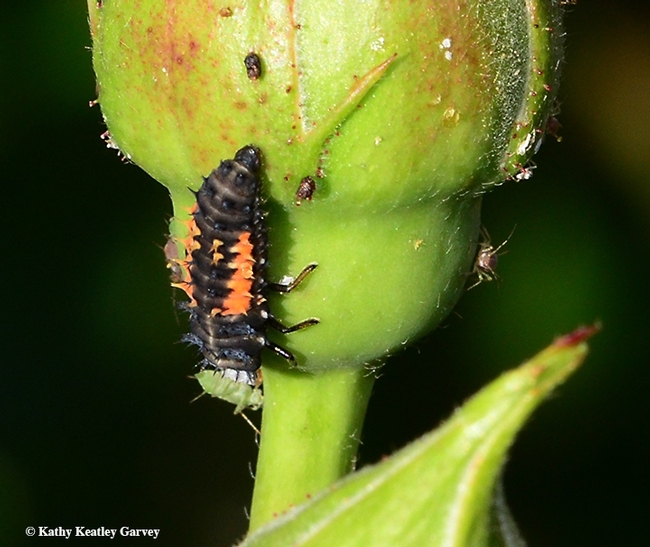
Larva of lady beetle munching on an aphid. (Photo by Kathy Keeatley Garvey)
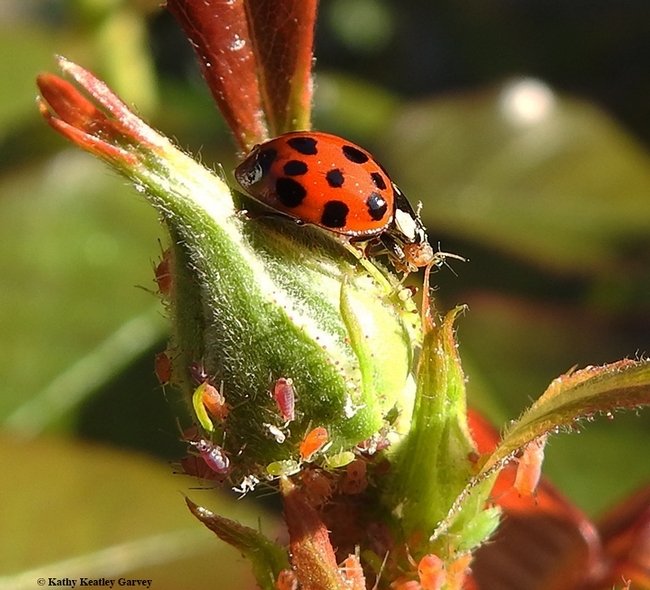
A multi-colored Asian beetles snags an aphid. (Photo by Kathy Keatley Garvey)
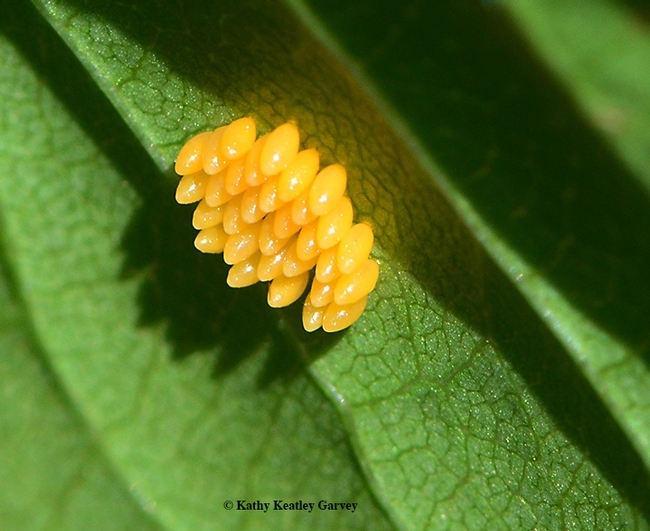
These are lady beetle eggs. (Photo by Kathy Keatley Garvey)
The Predator and the Pest
So here's this praying mantis perched on top of a prickly pear cactus. It's early morning and...

Breakfast! A hungry praying mantis eyes a cabbage white butterfly. (Photo by Kathy Keatley Garvey)
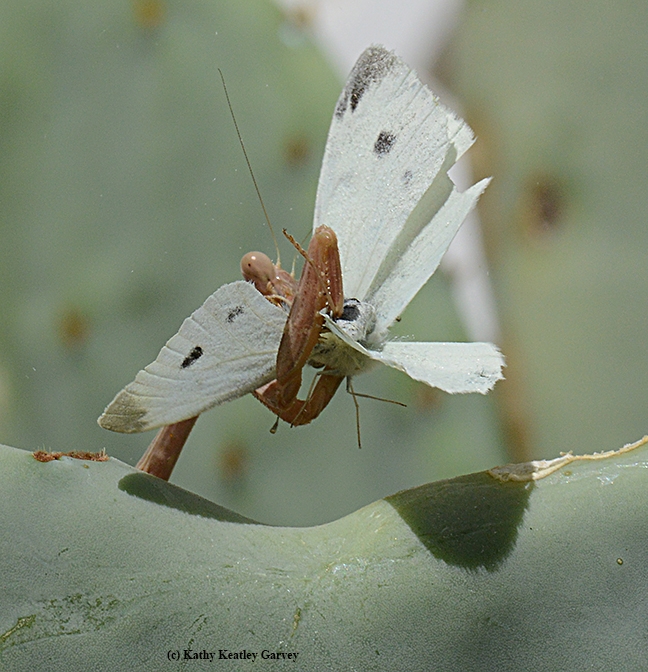
With a lightning strike, the praying mantis grasps the cabbage white butterfly with its spiked forelegs. (Photo by Kathy Keatley Garvey)
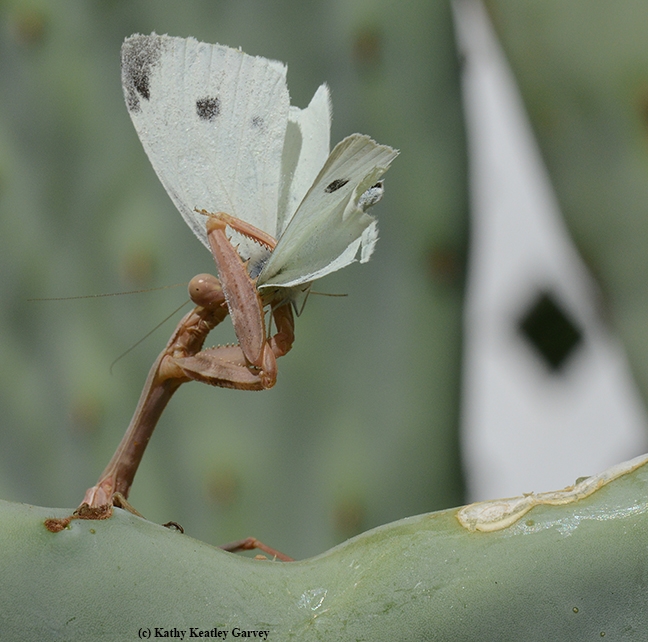
Holding it up like a trophy, the praying mantis begins to eat. (Photo by Kathy Keatley Garvey)
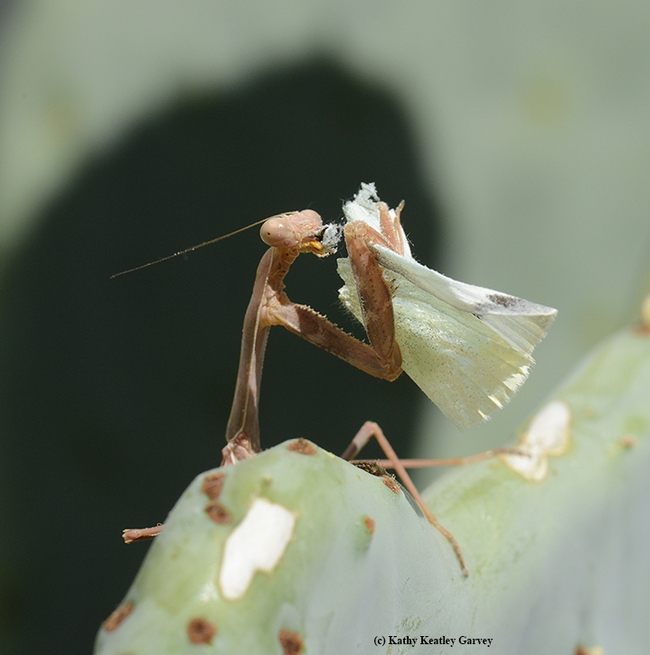
The praying mantis concentrates on breakfast. (Photo by Kathy Keatley Garvey)

Finished! Breakfast is over. (Photo by Kathy Keatley Garvey)
Lettuce planting workshop at the Fresno Farm and Nutrition Day on March 18, 2016 attracted many 3rd grade students.
UC ANR Kearney Agricultural Research and Extension Center provided a lettuce planting workshop for about 3500 third grade students from 36 schools and 16 districts at the 11th annual Fresno Farm and Nutrition Day. Students learned what it takes to be a healthy plant and a healthy person, they then planted 2 leaf lettuce plants to take home and enjoy. An ABC 30 news video shows some of the lettuce planting, which was made possible with the help of many volunteers. Greenheart Farms and The Food Plant People provided donations for the workshop. The lettuce planting was featured in videos and on the front page of the March 19, 2016 edition of The Fresno Bee. UC ANR was also represented by a Cal Fresh workshop and 4-H youth who brought farm animals. For more photos, please go to the UCANR facebook page.
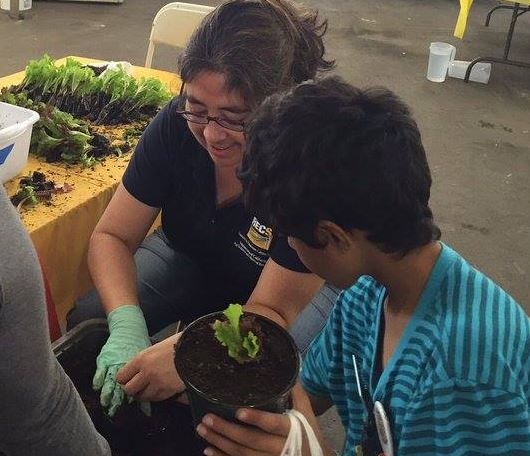
A Carrot field day held at Kearney showcased the results of efforts to develop root-knot nematode resistance in commercial quality carrots.
About 20 carrot industry stakeholders attended a carrot field day on October 7, 2015. The field day showcased the current status of a 20-year program to incorporate root-knot nematode resistance into commercial quality carrots. Philip A Roberts, Chair, nematologist, and professor in the Department of Nematology at UC Riverside, Philipp Simon, Carrot and Garlic Geneticist at USDA-ARS and the Department of Horticulture at University of Wisconsin, Madison lead the project. The research and breeding effort is funded by grants from the California Fresh Carrot Advisory Board and USDA-NIFA.
Numerous carrot advanced breeding lines show good resistance to root-knot infection and will be important in nematode management strategies when resistant varieties are released for growers. The project sites are infested with Meloidogyne javanica and M. incognita, the two common root-knot species in the warm interior valleys of California. To ensure uniform and heavily infested research sites, a 4-year rotation for experimentation (control and advanced selections and crosses of carrots) and uniform cropping (susceptible sorghum, lima beans, and tomatoes) is used.
Kearney is one of several sites used in field screening wild germplasm, new and advanced breeding lines, and finished varieties of carrots. The plots are coded for the source of resistance, and a highly susceptible carrot cultivar planted in every fifth plot is used to indicate the infestation levels. The primary goal is to select for resistance as well as market quality. The crossing of resistant and susceptible carrot lines is followed by agronomic and resistance selection to provide high quality resistant carrot breeding stocks to the seed industry. The seed companies then inter-breed the resistance with their own breeding lines to develop commercial varieties with resistance. The resistance should be highly beneficial for nematode management. Field site data is used with greenhouse data at UC Riverside. The project has also facilitated carrot genome mapping.

Carrot field day attendees evaluating carrot breeding lines at Kearney for root-knot nematode resistance and market traits.
Cabbage White Butterfly Not So Bad?
It's the butterfly we're supposed to hate. That would be the cabbage white butterfly, Pieris...
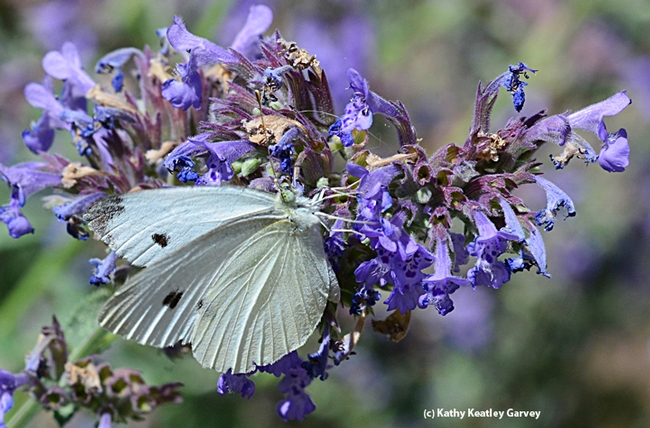
A cabbage white butterfly, Pieris rapae, nectaring on catmint. (Photo by Kathy Keatley Garvey)
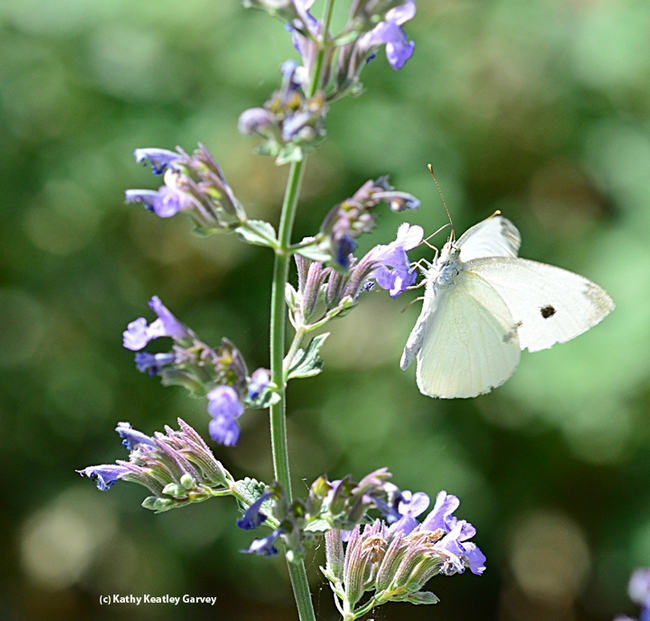
The larvae of the cabbage white butterfly, Pieris rapae, are considered pests of cole crops, but we should be thanking them for giving us the pungent taste of wasabi and mustard, scientists say. (Photo by Kathy Keatley Garvey)